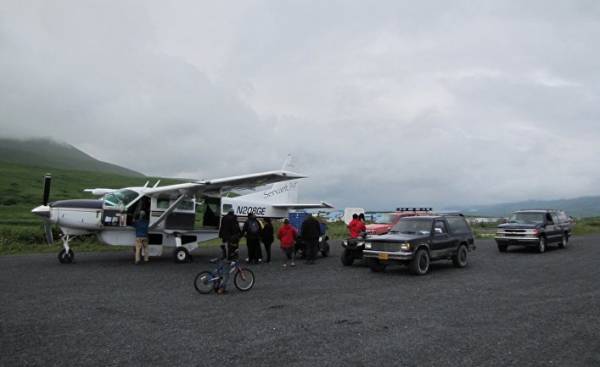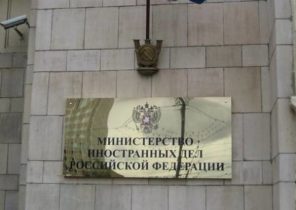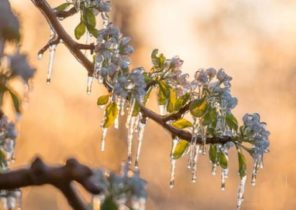
A native of the island of Afognak Macy Ott (57), living 350 miles southwest of anchorage, the largest city in Alaska, can’t forget the first time 35 years ago received dividends Permanent Fund Alaska (the Alaska Fund manages profits from oil production in the state and distributes part of the income in favor of the population — approx. ed.).
Together with his family in 1964 she left the house and moved to the mainland. Childhood Macey was poor: from the age of 5 she had to work in the cafe his mother, and the house didn’t even have a TV. In 1981 she married a fisherman and the next year the family was saving money to buy a small boat. After they finally bought it, all the fish off the coast of Alaska was struck by the infection, and prices fell sharply — there is no hope. But she remembered that people in Alaska they can receive annual dividends ranging from one thousand to two thousand dollars.
Over the next 20 years, Macy worked in the field of assistance to the indigenous people of Alaska, rising to the post of Vice-President of the island Afognak involved in social welfare projects of the indigenous population. Her husband all his life engaged in fishing, now has his own light aircraft (a crop duster — approx. ed.). Family Ott enjoys life above the middle class. “In a time when real income was not really, a goanna dividends seemed a fortune. Now, of course, in the overall income they don’t carry much weight, but in my youth they helped to overcome serious difficulties. I hope, therefore, that my descendants, they will be able to be of help,” says Macy.
“When there is no income, a goanna dividends seem to be more than 10 times”
Now, 35 years after commencement of payments, Alaskans treat the dividends as “hope of life” in hard times.
American public organization “economic security Project” in cooperation with Harstad Strategic Research in the spring of this year, interviewed a thousand people living in Alaska. 79% of respondents rated the dividends as “an important source of income”. 40% said that “dividends are very helpful in life”, 39% “good help”. Especially important was the money paid to women with low income (less than 50 thousand dollars a year for a family), among them 63% of respondents said that dividends “are very helpful in life.”
Native Alaskans Selma Oskolkov Simon (63) after many difficulties in 1996, also moved to Alaska from Wyoming. To raise their children, a single mother for ten years he worked at various jobs and accumulated dividends received. The accumulated amount was able to buy a machine that is essential for life in Alaska: the need to commute large distances, and public transport is very inconvenient.
“The most surprising part was when my daughter divorced her husband and received the dividends could rent a small apartment. Now for me received from Permanent Fund Alaska money — money for children and grandchildren,” says Salma.
Basically, Alaskans use dividends to pay off credit cards (30%) and as savings for the future (27%). While 24% of respondents a large part of the obtained money to spend, and 15% — half spending, half lay.
If in households with high income (more than 100 thousand dollars a year) 34% of the most part of dividends retain, among the poor (less than 50 thousand dollars a year) of only 18%.
On the question of what impact the payment of the permanent Fund of Alaska have on the incentives to work, 55% of respondents said that “significant effects are not observed”, 21% “dividends to encourage work,” 16% “dividends reduce the desire to work”.
Came from other countries Alaskans use dividends to visit their homeland
The Korean-American Kim JI Khve (63 years old) moved to Alaska in 2003. He says: “my wife and two receive about 2.5 thousand dollars a year from the Permanent Fund of Alaska. On rent and electricity takes $ 650, remains more than 1.8 thousand dollars. We’ll use the money to visit Korea. It’s hard to imagine that the indigenous Eskimos are simply too lazy to gratuitous payments, although there is a tendency that they are wasting the money on alcohol.”
The nave Connal, economist and Professor Emeritus of the University of Alaska: “Two thousand dollars a year is not enough to lower the motivation to work. From the point of view of Alaskans, the dividend is not welfare, but a natural right of the owner to belong to the population the natural resources, particularly oil.”
The system of regular payments has become an integral part of people’s lives, proof of their rights over natural resources, which they are not going to give up, even if you increase the tax burden. So, the question “If the Fund of Alaska was faced with financial difficulties, would you refuse from dividends or would prefer to pay a proportionate income tax?” 35 years ago, 71% of respondents chose the answer “to refuse dividends”, while now only 36%.
Economist Milton Friedman distinguishes between permanent income (monthly or annual) and once paid (a bonus or a lottery). With the growth of permanent income increases consumption and the tendency to preserve once obtained income.
When Alaskans first received the dividends they were treated as a one-off payment. But over time, the dividends began to be perceived as a regular income.
Basic income needs to control the “transparent government”
Is it possible to apply a similar system of payments in other regions?
Professor of Economics at the University of Alaska Matthew Berman outlined three basic requirements due to which the system will work. First, the region needs to be rich in natural resources. Second, control over natural resources must exercise state, not a private person or Corporation. Thirdly, management must be carried out transparently.
“In the case of countries such as Russia, where the government is opaque, the system dividends may not work successfully only on the basis that the country is rich in oil. In addition, the system of dividends has worked in Alaska because most of the area is public, not private ownership. A similar example in the United States in addition to Alaska can be observed only in Texas,” explains Matthew Berman.







